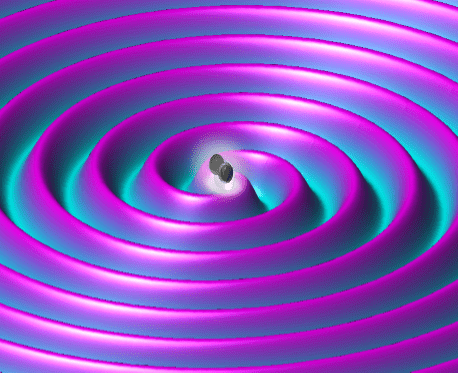
(Wikimedia Commons public domain image)
I’ve had occasion several times before to quote from John Charlton Polkinghorne, KBE (Knight of the British Empire), FRS (Fellow of the Royal Society), who is an English theoretical physicist, theologian, writer, and clergyman. He was a professor of mathematical physics at the University of Cambridge until he resigned his professorial chair to study for the priesthood, becoming an ordained Anglican priest in 1982. He served as the president of Queens’ College, Cambridge, from 1988 until 1996.
And now I’m going to do it again:
Again and again in physical science we find that it is the abstract structures of pure mathematics which provide the clue to understanding the world. It is a recognized technique in fundamental physics to seek theories which have an elegant and economical (you can say beautiful) mathematical form, in the expectation that they will prove the ones realized in nature. General relativity, the modern theory of gravitation, was invented by Einstein in just such a way. Now mathematics is the free creation of the human mind, and it is surely a surprising and significant thing that a discipline apparently so unearthed should provide the key with which to turn the lock of the world.
It is this fact of intelligibility which convinces one that science is investigating the way things are. Its insights are certainly open to correction. As access is gained to new regimes, profound modifications can be called for. Thirty years ago, when I was a young research student, no one had dreamed of quarks and gluons. Who can feel confident that thirty years hence they will still be seen as the ultimate constituents of matter? Nevertheless the coherence of the inquiry into the structure of matter, the beautiful way in which the properties of previously “elementary” objects like protons and neutrons find a natural explanation in terms of their new constituents, makes one feel that it is a tale of a tightening grip on an actual reality.[1]
[1] John Polkinghorne, The Way the World Is (Grand Rapids: Eerdmans, 1983), 9.
***
I blogged yesterday about the naming of Dr. Kip Thorne, Richard Feynman Professor of Theoretical Physics Emeritus at the California Institute of Technology (not far from where I grew up) and a native of Logan, Utah, as one of the three recipients of the 2017 Nobel Prize in Physics:
“Dr. Kip Thorne, ex-Mormon, wins the Nobel Prize in Physics”
Those who found that blog entry or that story interesting will, I think, also be interested in this somewhat Mormon-oriented 2016 article by B. Kent Harrison, who is a retired member of the physics faculty at Brigham Young University and who, like Kip Thorne (and, for that matter, like Richard Feynman), earned his doctorate under John Archibald Wheeler at Princeton University:
“The Discovery of Gravitational Waves: A New Window on the Universe”
And, by the way, a 2010 entry from Dr. Harrison — who, incidentally, co-authored Gravitation Theory and Gravitational Collapse (Chicago, 1965) with Kip S. Thorne, Masami Wakano, and John Archibald Wheeler — can be read on the Mormon Scholars Testify site.
***
In this context, Dr. David H. Bailey’s keynote remarks at the Interpreter Foundation’s 9 November 2013 conference on Science & Mormonism: Cosmos, Earth, & Man also seem apropos:
“Science vs. Religion: Can This Marriage Be Saved?”











